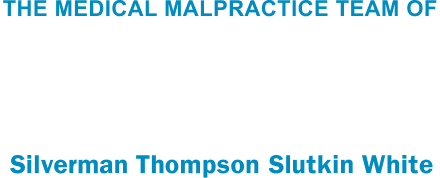My Baby Has Been Diagnosed With Cerebral Palsy Following a Difficult Delivery: Do I Have Legal Recourse
The labor and delivery process associated with the birth of a child is simultaneously exhilarating and fraught with considerable danger to the baby in certain circumstances. Too often, obstetricians and high risk pregnancy specialists, called maternal fetal medicine doctors, are, through their own negligence asked to make split second decisions that could potentially impact the lives of these babies and their parents for the rest of their lives. The most devastating injuries to a newborn baby are those affect the brain. In most instances, injuries to the baby’s brain are caused by a lack/deprivation of oxygen to the brain for a prolonged period of time during the labor and delivery process. For example, the baby might be in an unusual position that results in the umbilical cord (the lifeblood for the baby) being compressed or squeezed, thereby reducing the flow of oxygen to the baby’s brain. In other circumstances, sometimes the labor itself is too long (hours or even days), causing stress on the baby, and resulting in a shortage of oxygen to the brain. In still other circumstances, the baby’s red blood cells, the cells that carry oxygen to the brain are compromised, thereby reducing the amount of oxygen that reaches the baby’s brain. If these potentially catastrophic circumstances, and other similar ones, are not timely recognized, the outcome is often life-changing for the baby.
Cerebral Palsy
One of the most common consequences of a deprivation of oxygen to the baby’s brain is a diagnosis of cerebral palsy. Referred to as “CP” for short, this term is used to describe the damage or lack of development of certain areas in the baby’s brain that control his/her motor function. In short, these areas of the brain do not develop normally because of the lack of oxygen. As a result, the brain’s ability to control the baby’s movements and posture is compromised. There are many different types of cerebral palsy. Some children have minimal loss of motor function and are, therefore, capable of largely controlling their own movements and posture. At the other end of the spectrum, some children with CP are completely devastated — unable to even hold their heads up on their own; unable to chew and swallow; unable to roll over, crawl or walk on their own; and unable to control their movements. Many of these children also experience epileptic seizures in conjunction with their CP. These children also can have problems with their hearing, vision, speech, and ability to learn.
At Silverman Thompson, our attorneys all too regularly represent families with children in the Baltimore and Washington D.C. areas who have been diagnosed with cerebral palsy following a complicated labor and delivery. In many of these instances, the baby’s injuries could have been prevented had the doctors done things such as:
- Pay closer attention to the fetal heart monitor – the machine that monitors the baby’s heart rate and tell the doctor if the baby is in trouble;
- Detect whether the baby’s umbilical cord is being compressed or has prolapsed (wrapped around the infant’s head or neck – stopping flow of oxygen to the baby);
- Performing an emergent cesarean section to deliver the baby when his/her heart rate has dropped critically low or the umbilical cord is wrapped around the baby’s neck. In many of these instances, better vigilance on the part of the physicians could have avoided or lessened the injury to the baby.
If you or a loved one are the parents of a child who has been diagnosed with cerebral palsy following a difficult or complicated labor and delivery and you feel your child’s injuries may have been caused by a medical mistake or delay in delivery, call our lawyers for fee consultation at (410) 385-2225.






